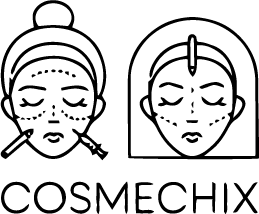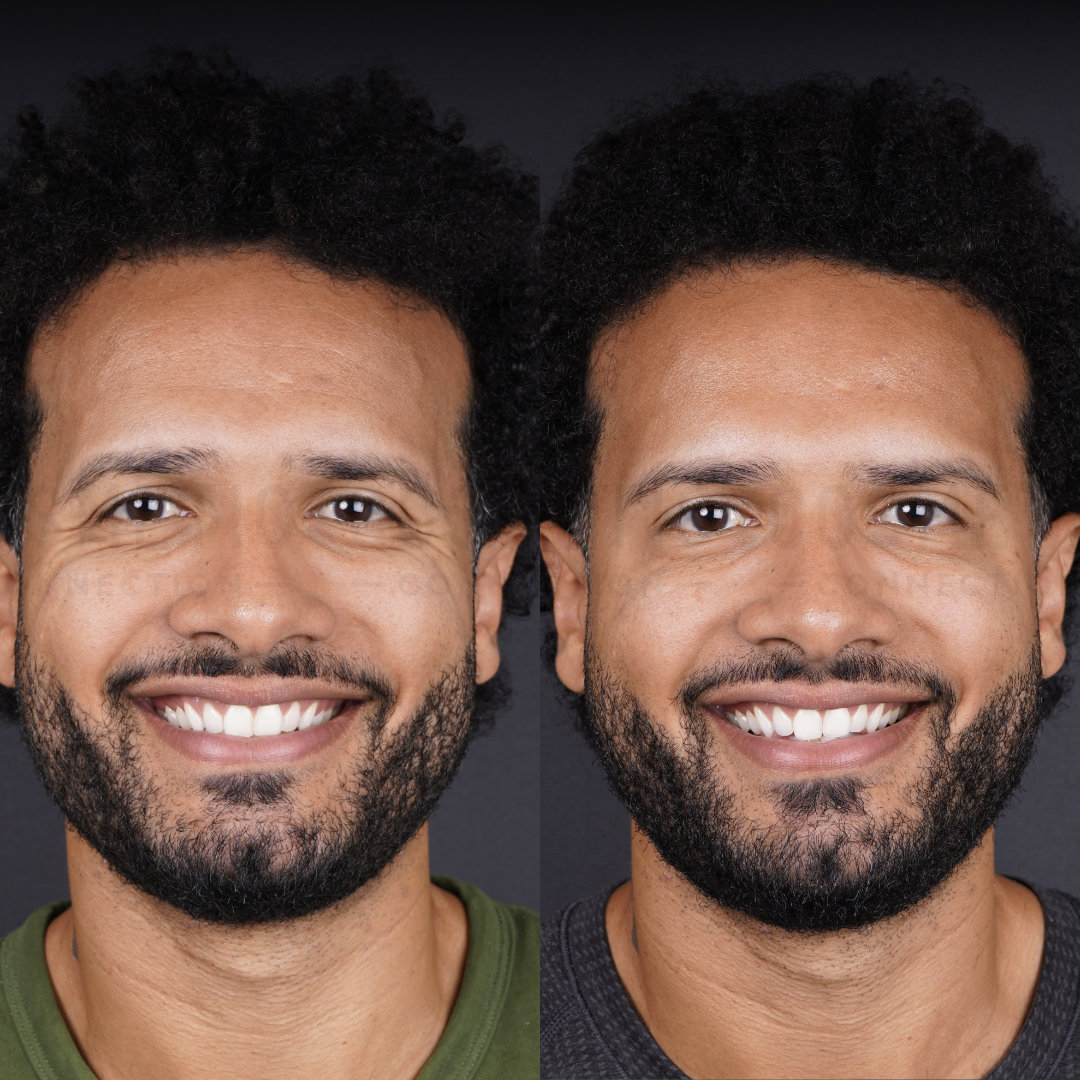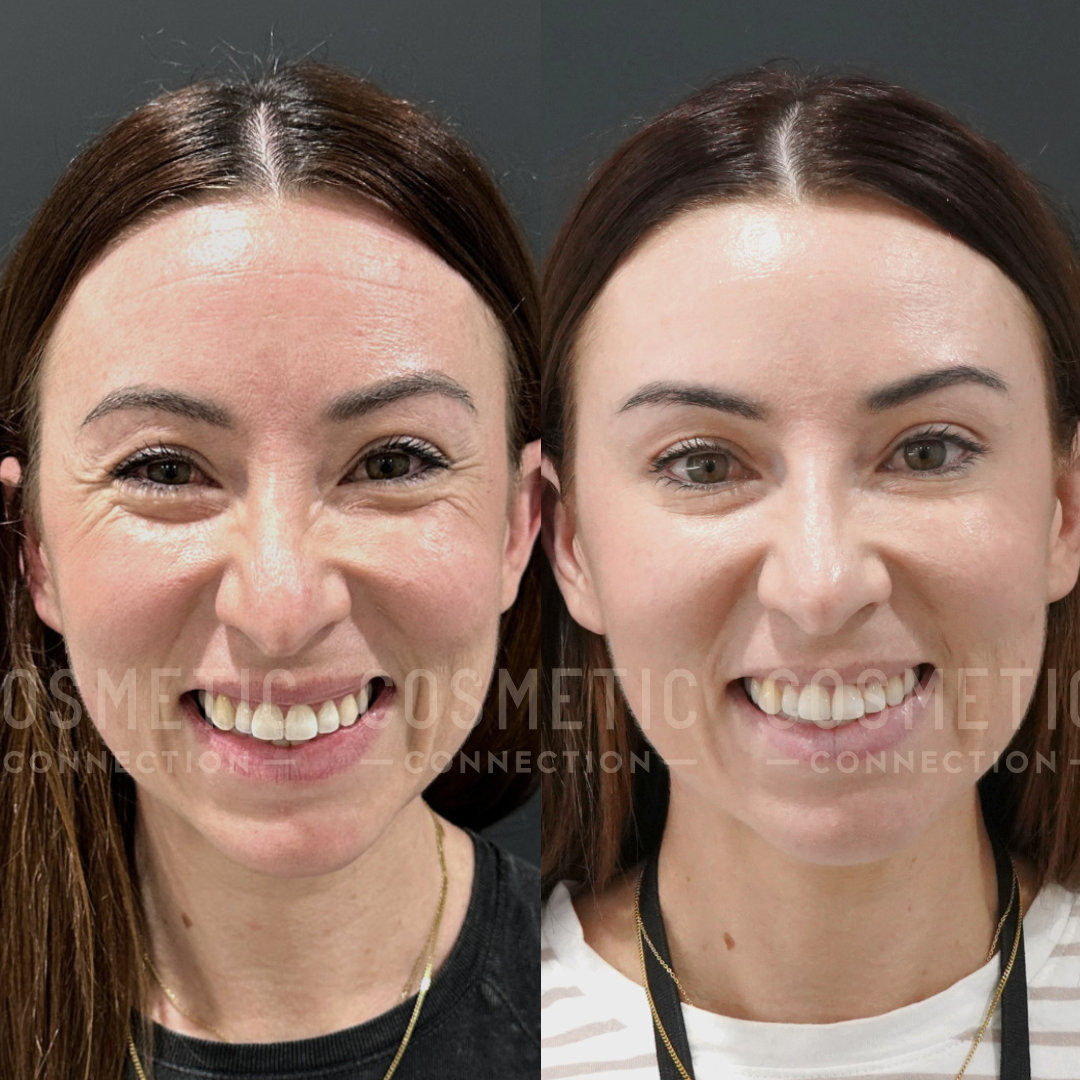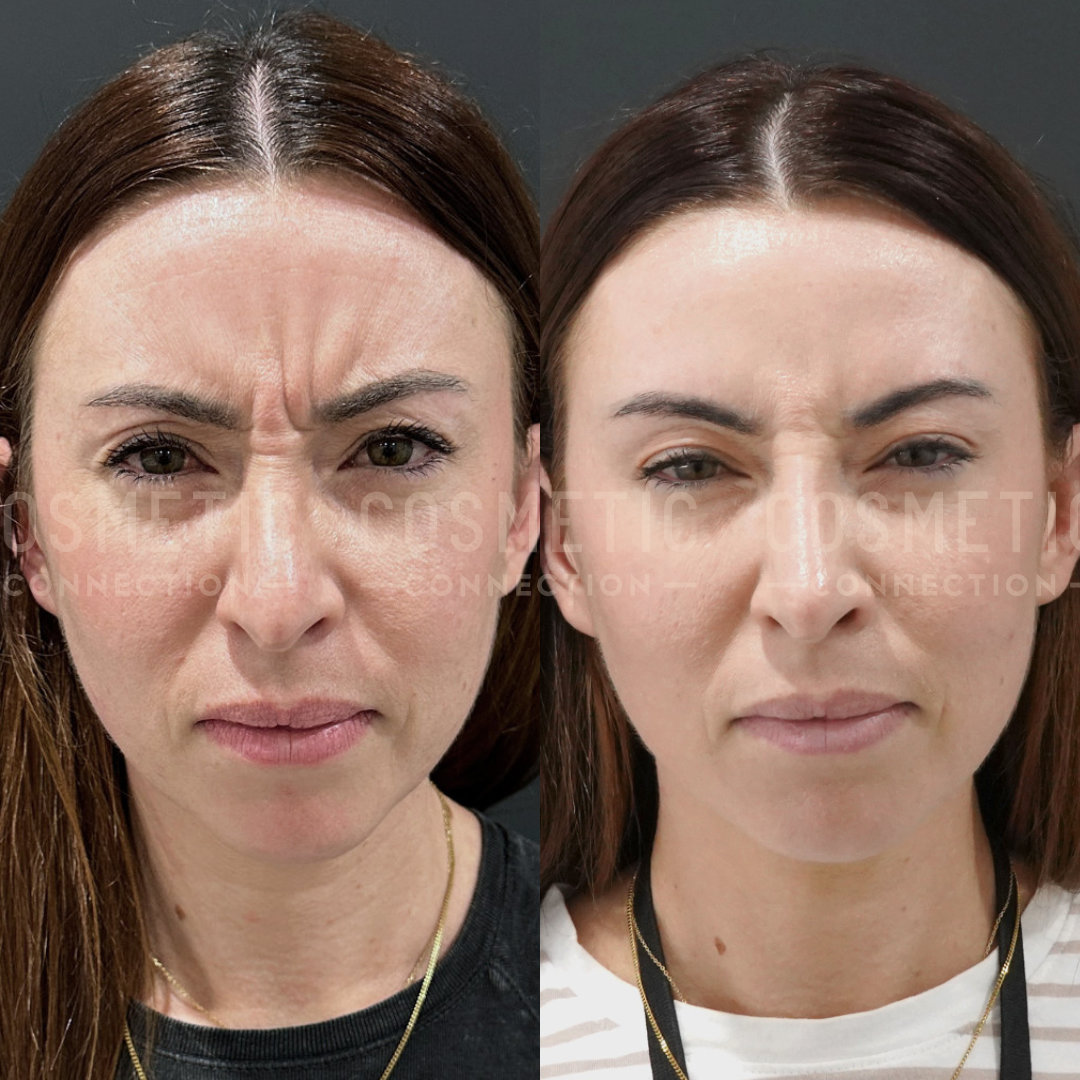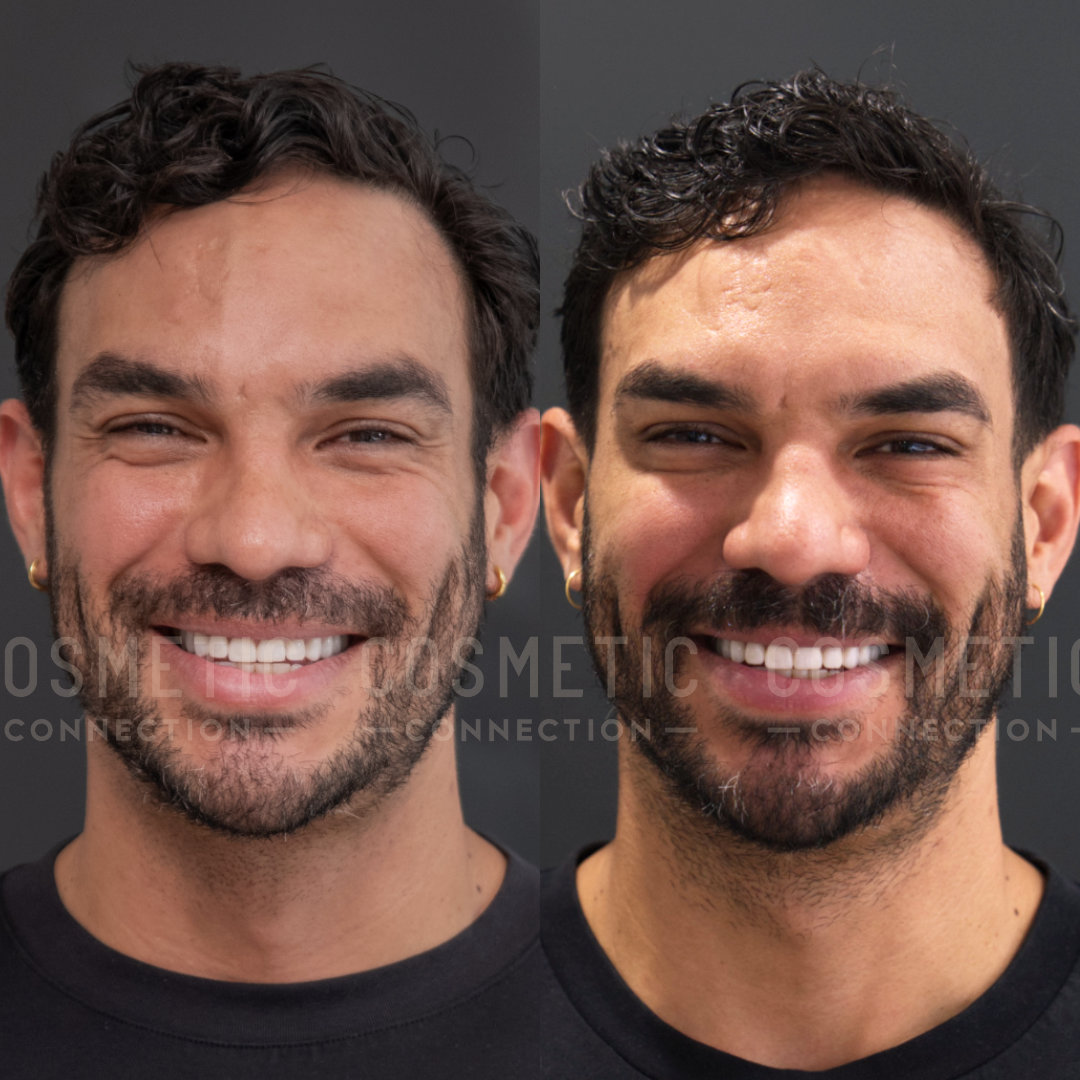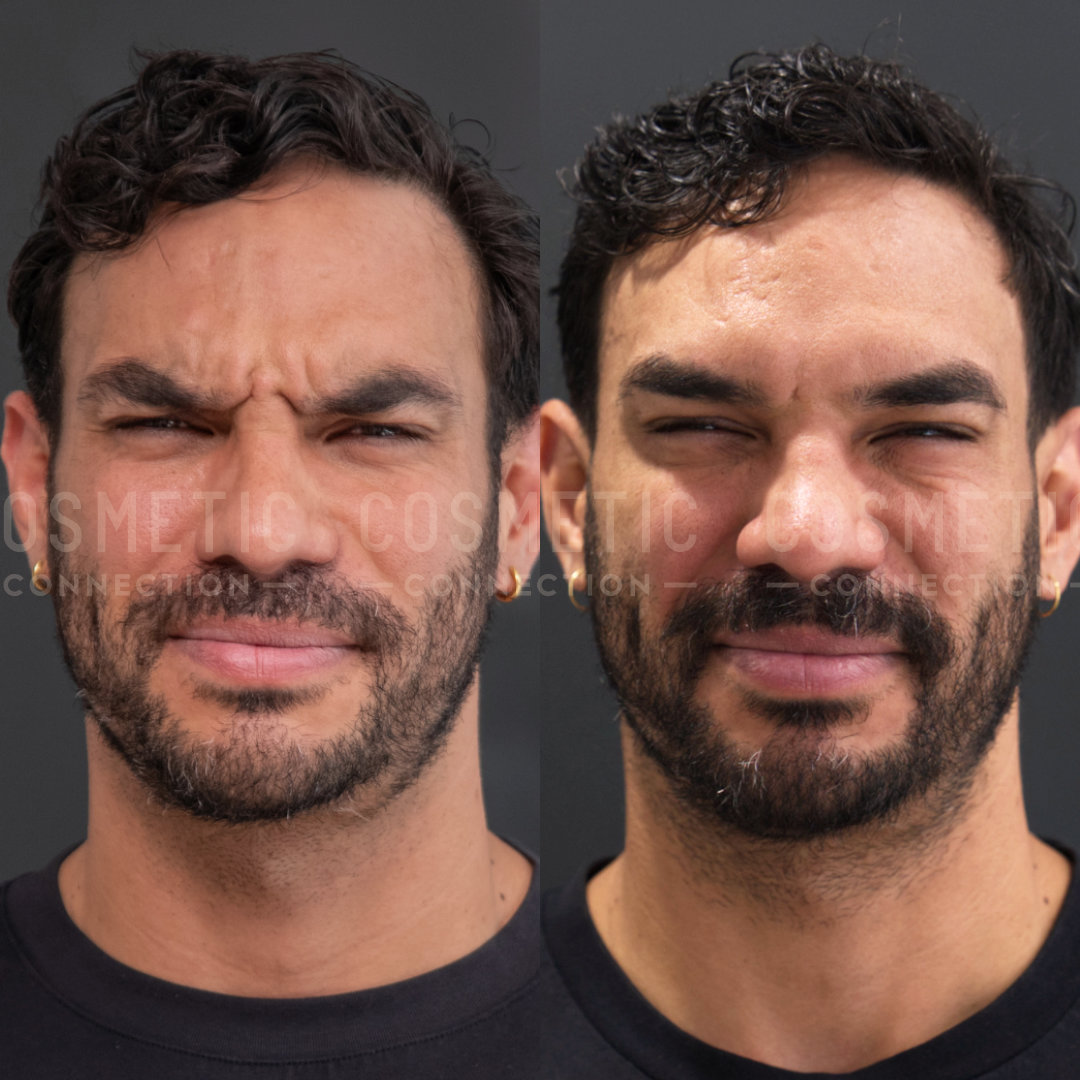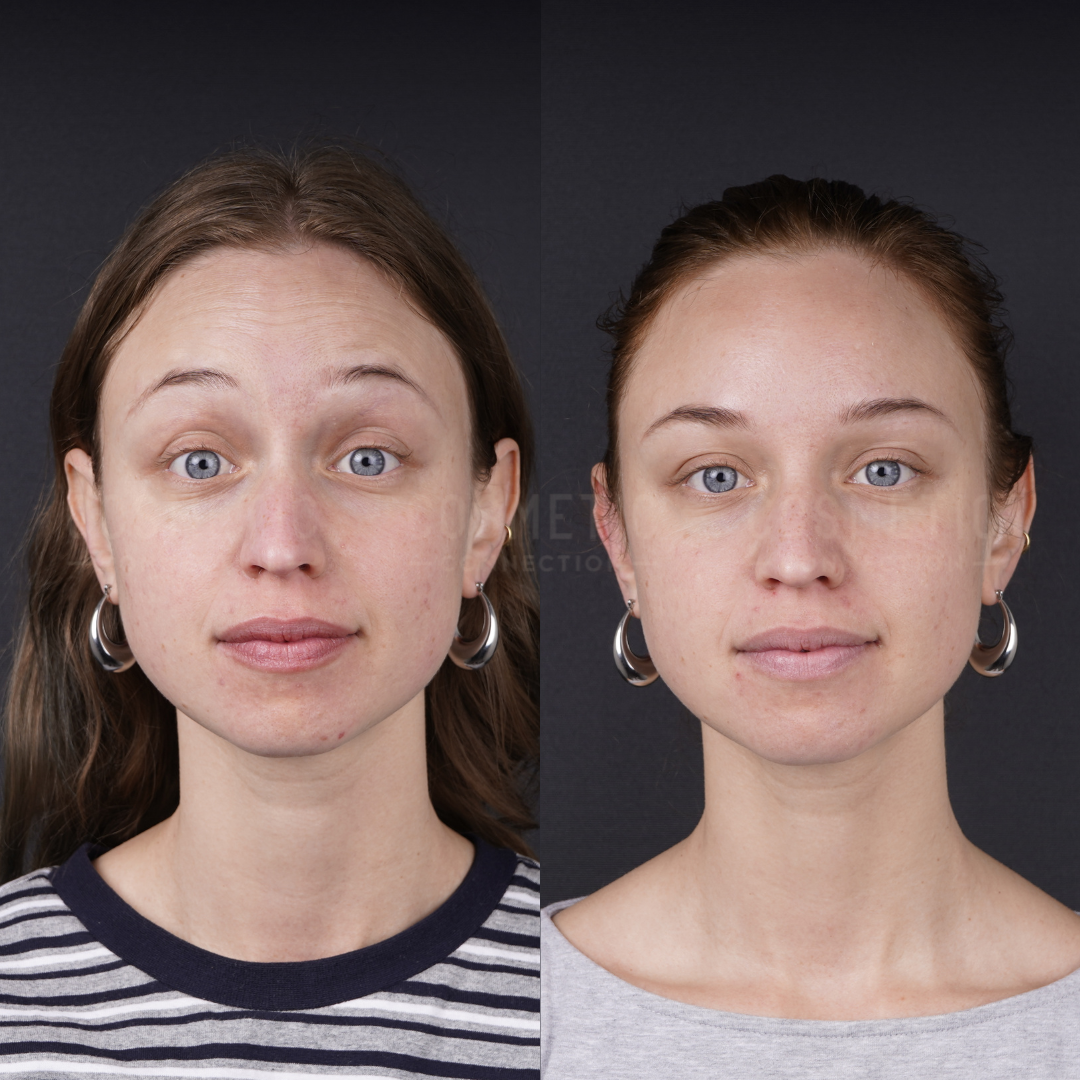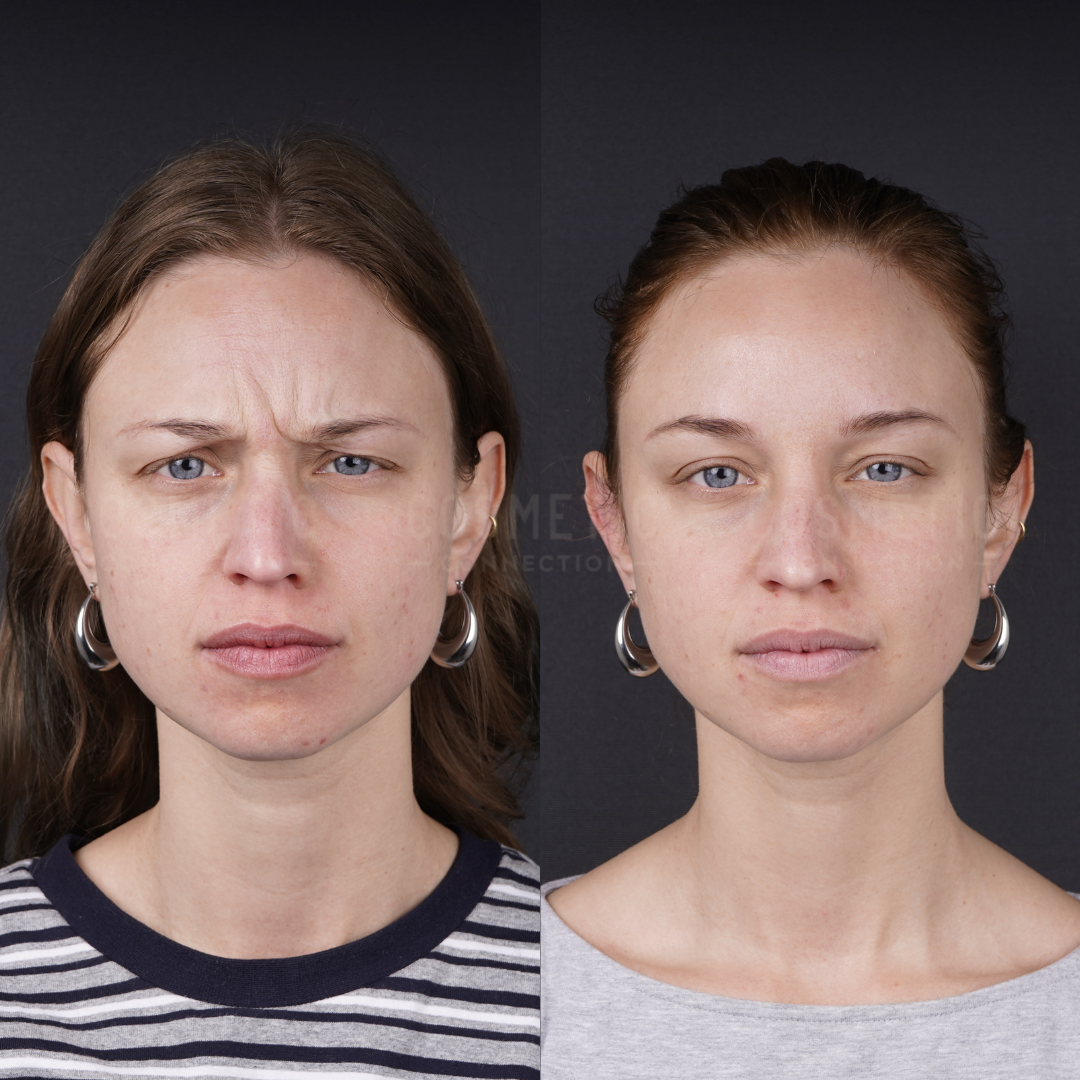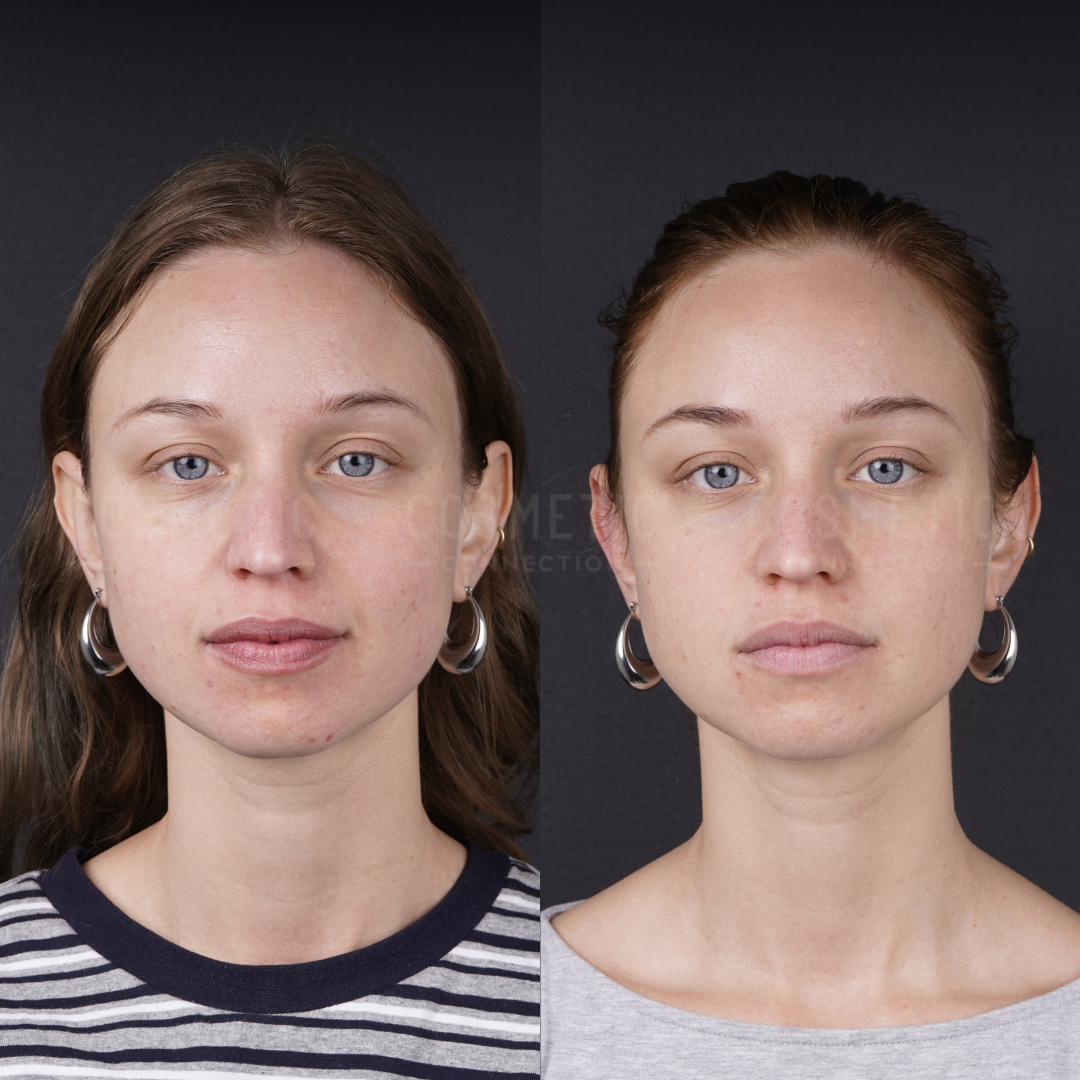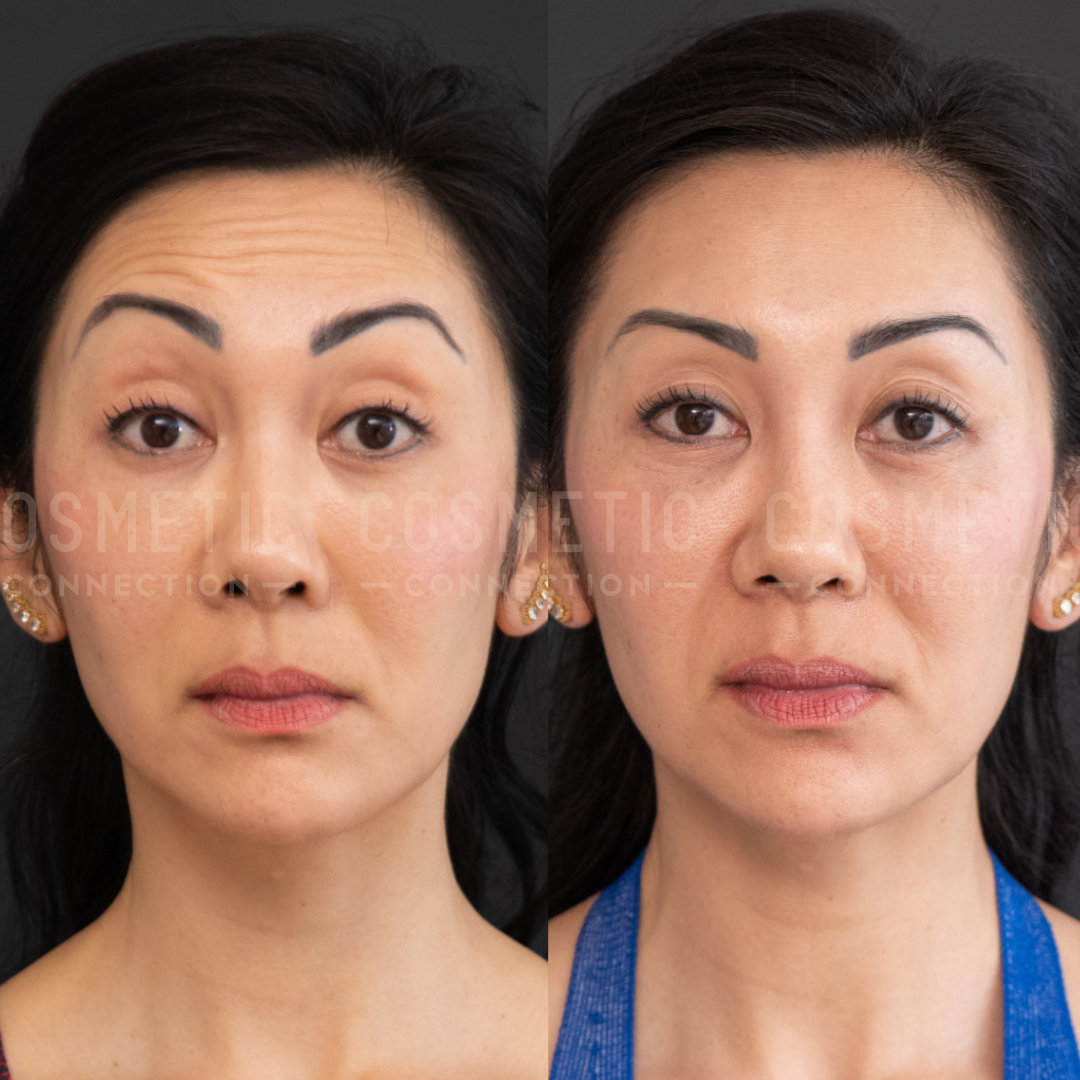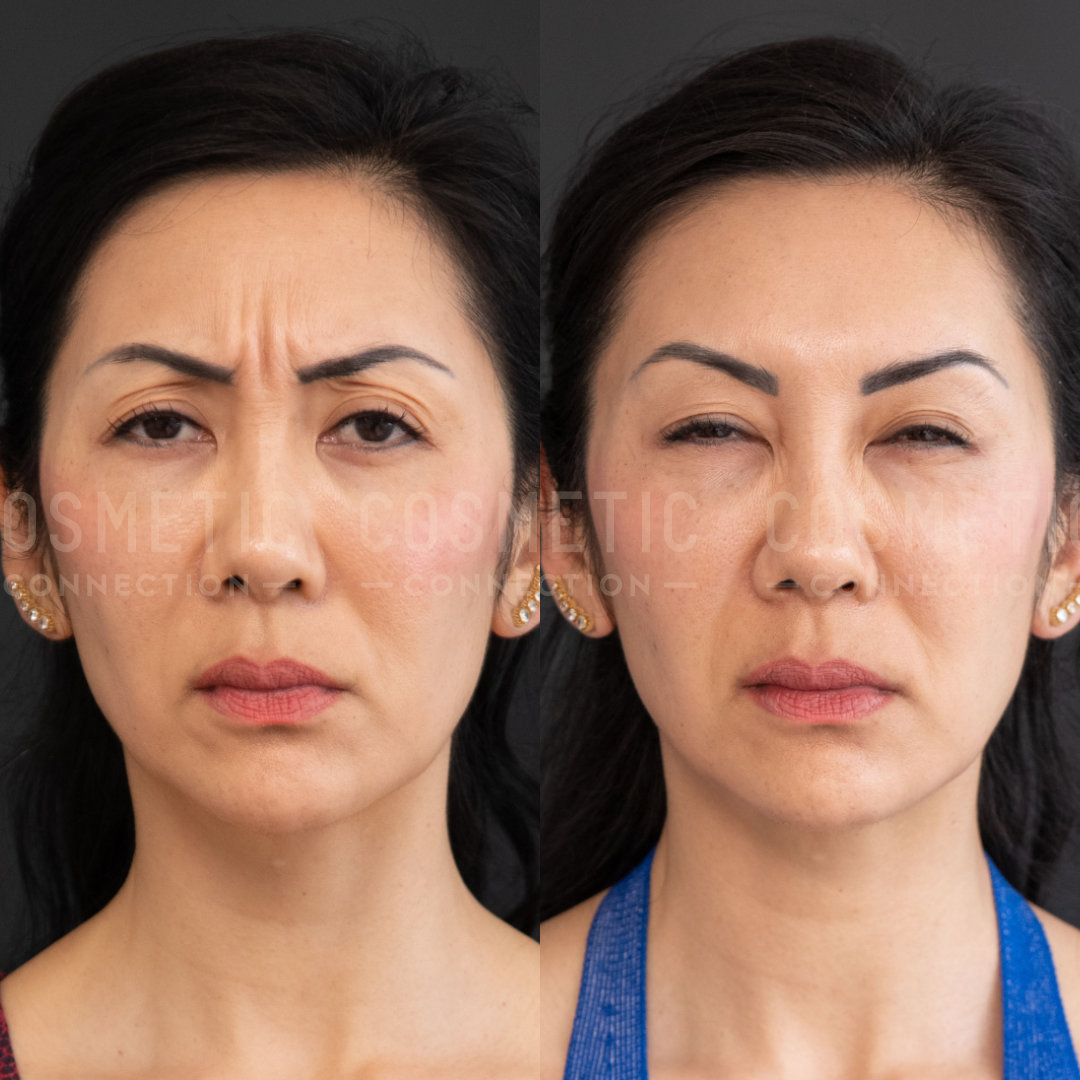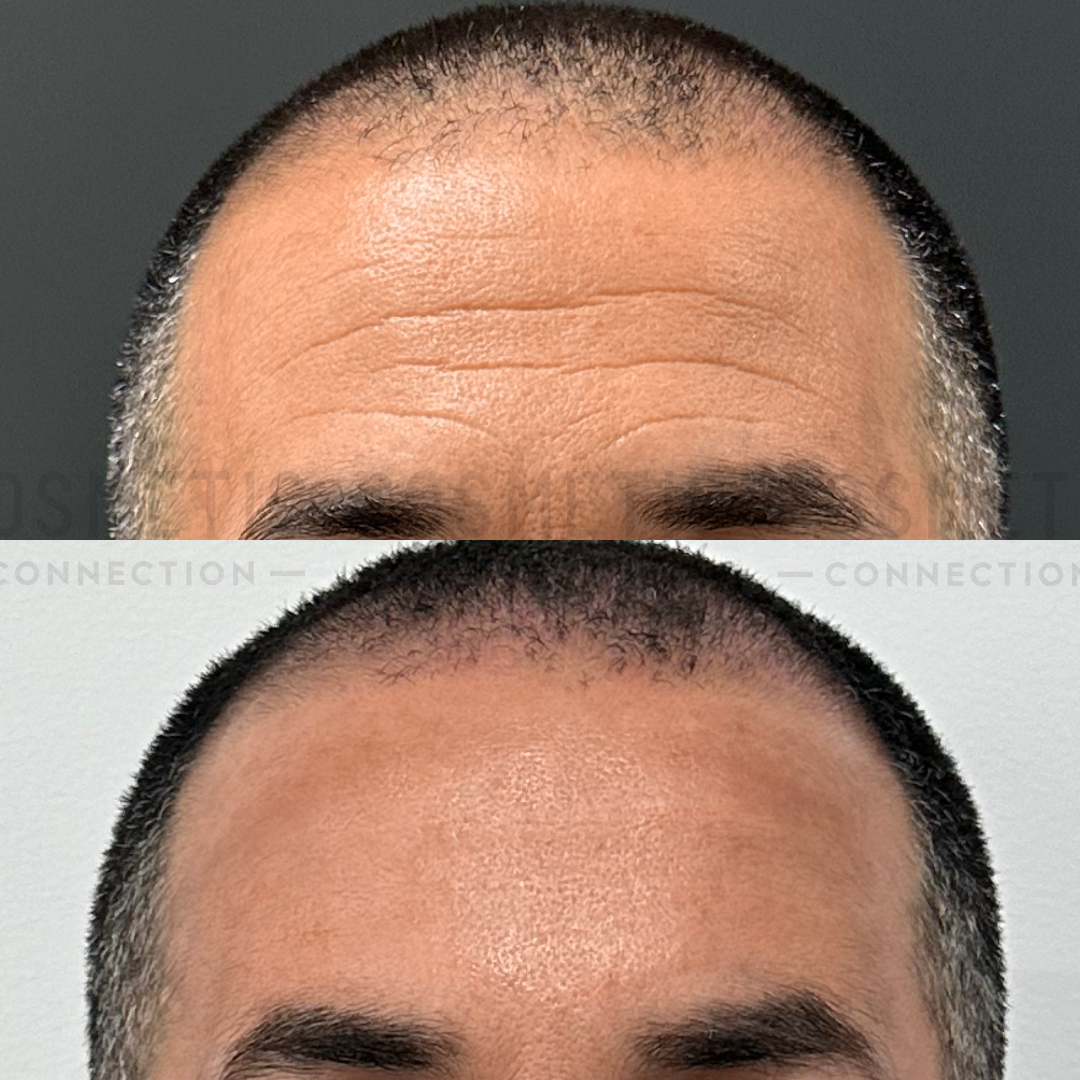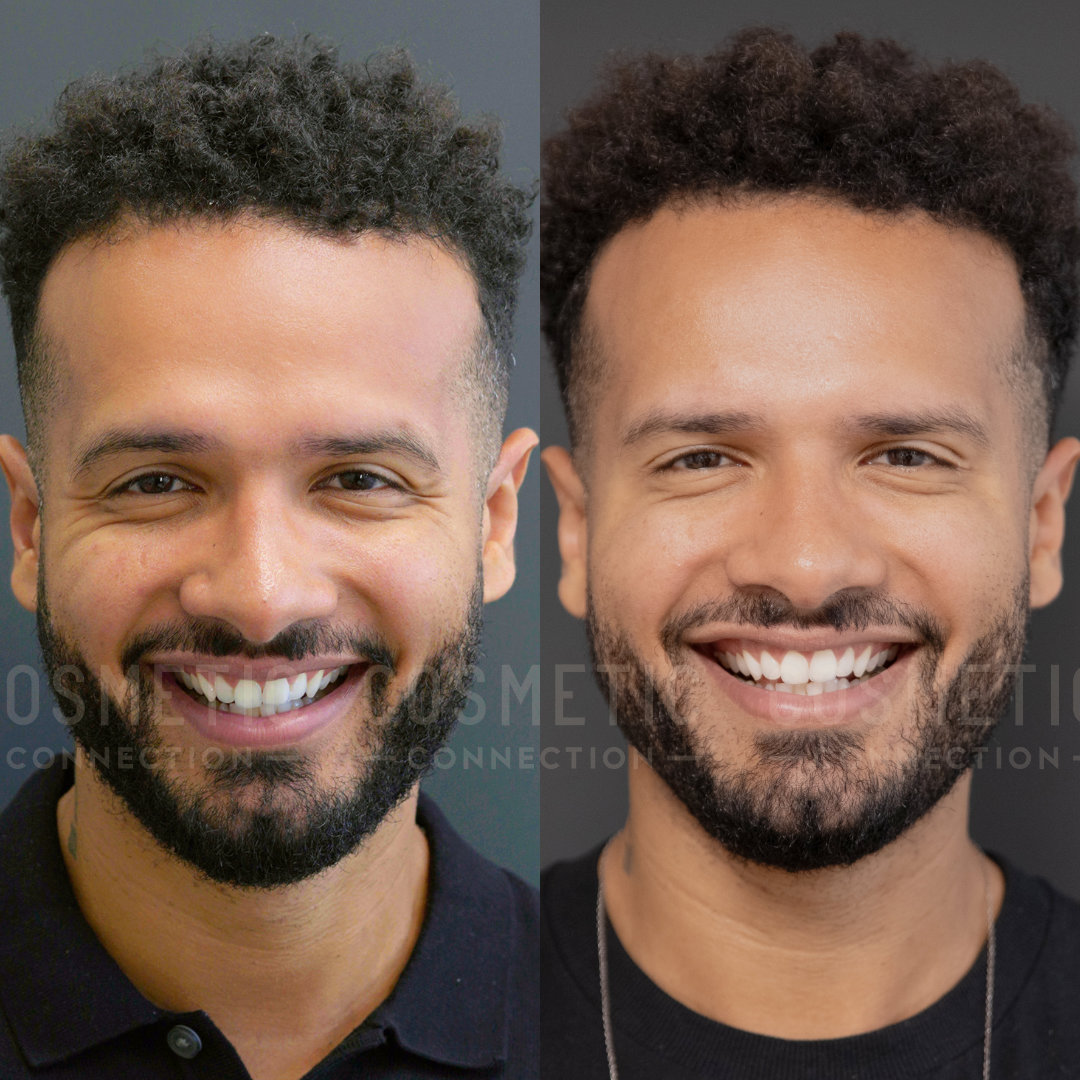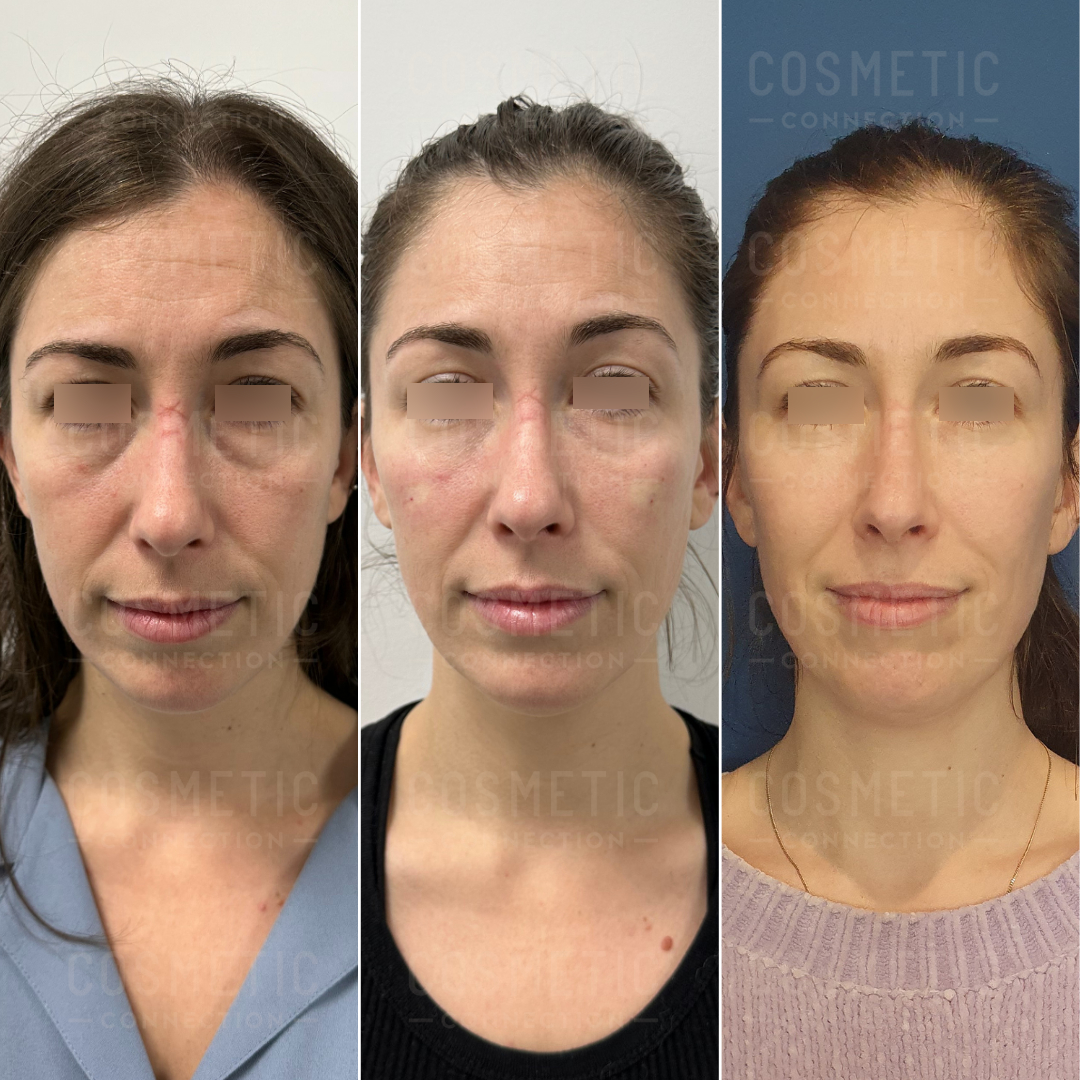Women & Men
Medical wrinkle treatments
Convenient, seamless appointments
Medically-backed wrinkle treatment
Natural, discreet results
Ongoing doctor-led support
One flat fee for forehead, frown & eyes
Fine lines and wrinkles are a natural part of ageing, but they don’t need to define how you see yourself.
With medical wrinkle treatment from our experienced professionals, you can find yourself again by softening and preventing lines for visibly smoother skin, and a refreshed look.
Start your booking process by providing us some details
As seen in
Soften & prevent fine lines
Enjoy visibly smoother skin, while keeping your natural expressions
Personalised, Professional Treatment
Reduce wrinkles with treatments that align with your preferences and lifestyle.
Clinically-Proven
Scientifically shown to reduce the appearance of wrinkles.¹ ² ³ ⁴ ⁵
Simple, flat-fee pricing
One transparent price covers forehead, frown, and crow's feet wrinkles, plus a complimentary adjustment.
Flexible 16-Week Treatment Window
Refresh your look over time with package pricing for other treatments within 16 weeks—no lock-in.
Treatment info
Treatment objectives
Suitability
Preparation
Aftercare
Results

Select a region
Forehead wrinkles
Horizontal lines that show when you lift your brows, whether from natural movement or to offset heaviness in the upper eyelids.
Frown lines
Vertical lines between your eyebrows, often called “glabellar lines” or “elevens”, that appear when you scowl or furrow your brow.
Crow's feet
Lines around the outer corners of your eyes, also known as “eye wrinkles”, which are often most visible when you smile or squint.
Forehead wrinkles
Horizontal lines that show when you lift your brows, whether from natural movement or to offset heaviness in the upper eyelids.
Frown lines
Vertical lines between your eyebrows, often called “glabellar lines” or “elevens”, that appear when you scowl or furrow your brow.
Crow's feet
Lines around the outer corners of your eyes, also known as “eye wrinkles”, which are often most visible when you smile or squint.

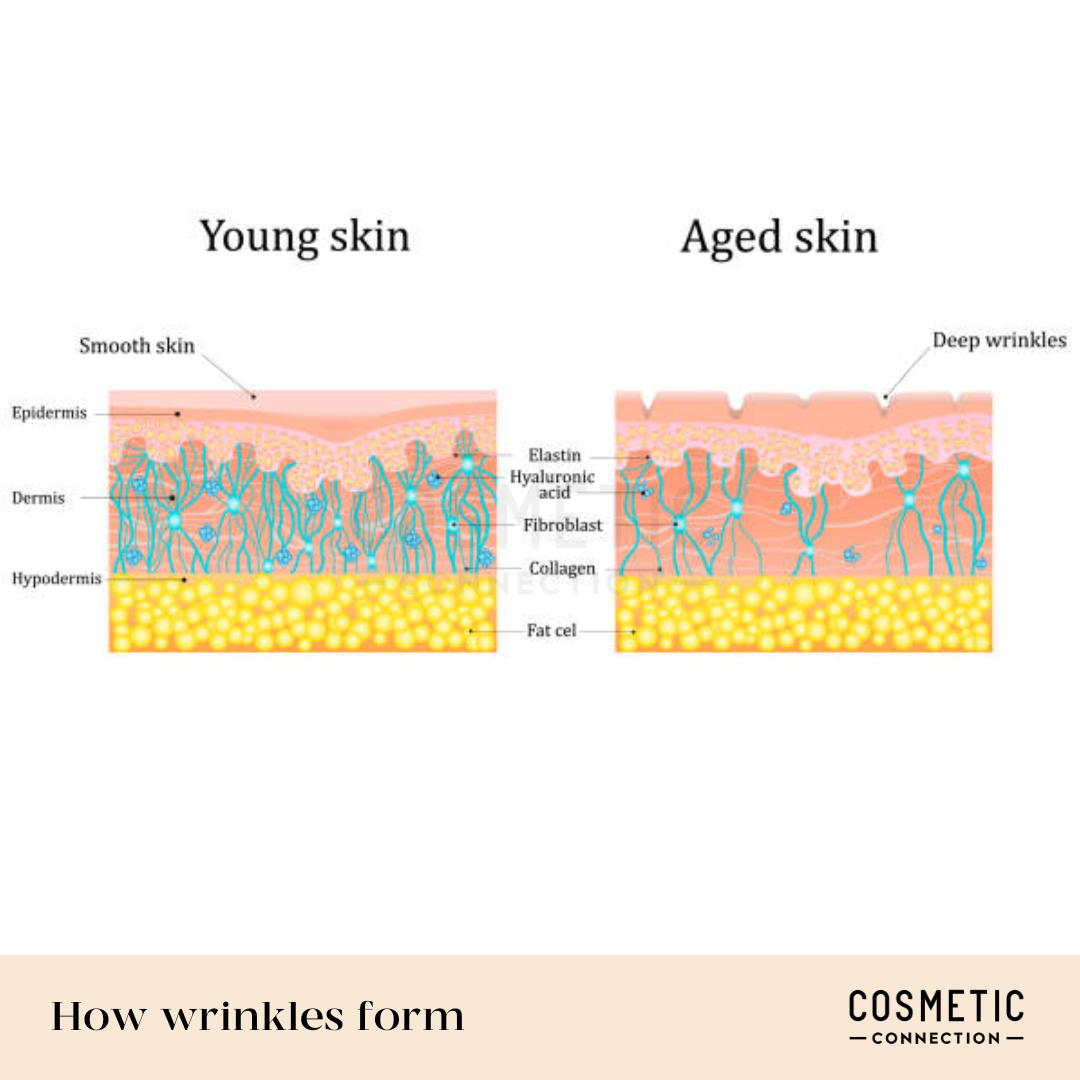
Have questions? We're here to help.
Get in touch and we’ll get back to you with the answers you’re looking for.
1. DOI: 10.1002/14651858.CD011301
2. DOI: 10.1097/DSS.0000000000002165
3. DOI: 10.1080/09546634.2023.2216323
4. DOI: 10.1111/jocd.16760
5. DOI: 10.2147/CCID.S41537
Wrinkle treatment available at Cosmetic Connection have been approved for use in Australia, and is commonly recommended by doctors for the treatment of fine lines. However, due to Australian Therapeutic Goods regulations, we are unable to discuss specific treatments until you speak with one of our practitioners. This is to ensure a qualified medical professional discusses your suitability and potential options before you make any decisions regarding medical treatments.
Wrinkles are lines, creases, or folds that form in the skin. They are a natural part of the ageing process, primarily caused by a breakdown of collagen and elastin, the structural proteins that keep our skin firm and elastic. Other contributing factors include sun exposure, genetics, repetitive facial movements, smoking, and environmental pollutants.
The appearance of wrinkles varies from person to person, influenced by genetics and lifestyle. However, fine lines can often start to become noticeable in the 20s and 30s, particularly around the eyes (crow’s feet) and forehead. More pronounced wrinkles tend to develop in the 40s and beyond as collagen and elastin production naturally decreases.
While we can’t completely stop the aging process, we can take steps to minimise and slow down the development of wrinkles. Consistent sun protection with broad-spectrum SPF, a healthy skincare routine with hydrating and antioxidant-rich products, avoiding smoking, staying hydrated, and managing stress can all make a difference.
Certain in-clinic treatments can also help to slow the development of lines and wrinkles.
There’s a wide range of treatments available, from topical skincare products containing ingredients like retinoids and peptides, to in-clinic procedures. These treatments work in various ways, including relaxing muscles, adding volume, and stimulating collagen. The best option depends on the type and severity of your wrinkles, your skin type, and your desired outcome. The primary and most common method targets muscle activity.
The best way to determine the most suitable wrinkle treatment is to have a consultation with a qualified and experienced practitioner. They will assess your skin, discuss your concerns and goals, and recommend a personalised treatment plan tailored to your individual needs and expectations.
There’s no one “right” age—it comes down to when you first notice lines that concern you, or when you value preventing lines enough to consider treatment. For preventative measures, we recommend beginning a quality skincare routine—including daily sun protection—in your 20s, before wrinkles appear.
Deciding if wrinkle treatment is right for you depends on your personal concerns about wrinkles, your desired outcome (subtle softening vs. significant reduction), your budget and tolerance for downtime, and whether you prefer immediate or gradual results. Being in good health and having realistic expectations are also important. The most effective way to determine if treatment is suitable for you is to consult with a qualified practitioner who can assess your skin and discuss your individual needs and goals.
Treatment involves targeting the glabella Complex muscles (Corrugator and procerus) located between the eyebrows. This gently relaxes these muscles, preventing them from pulling the brows together and down. By inhibiting this movement, the deep “11” lines are smoothed and prevented from deepening further.
For transparency, we’ve developed a fixed-price approach for the most common treatments for forehead, frown, and crow’s feet (eye) wrinkles.
For current wrinkle treatment costs, and information about our fixed-price approach, you can:
Wrinkle treatments are generally well tolerated, although each person’s experience of discomfort will vary. Numbing creams or cooling techniques can be used to minimise any discomfort.
Yes. Men generally have stronger muscles and thicker skin. Reducing wrinkles for men requires higher strength treatments to achieve effective smoothing. Crucially, the treatment pattern is designed to maintain a flat, horizontal, and masculine brow line, avoiding the subtle arch that is often desired in female aesthetics.
Depending on the treatment methods, results from treating wrinkles typically develop over days to weeks.
Typically, treatments for wrinkles wear off over 3-5 months months depending on the specific methods used, as well as your lifestyle and metabolism.
When performed correctly, treatment should not affect your smile. The product is precisely placed in the orbicularis oculi muscle at the outer edge of the eyes. The goal is to relax the lines that appear when squinting or smiling without freezing or significantly altering the natural, upward pull of the cheek muscles that create a genuine smile.
Most wrinkle treatments have a short recovery time, involving slight redness for 30 minutes. Your practitioner will provide you with specific aftercare instructions to help support the healing process.
After wrinkle treatment, expect some temporary redness, and possibly mild swelling, which usually subside within 30 minutes (some methods may take longer). It’s important to avoid touching the area, strenuous exercise, excessive heat, and alcohol initially. Results may be immediate or take up to two weeks depending on the treatment method.
When performed by a qualified and experienced practitioner, treatments for wrinkles are considered safe. However, as with any treatment, there are potential side effects. A comprehensive consultation is crucial to ensure you are a suitable candidate and that all of your questions and concerns are addressed.
The most common side effects are mild redness and swelling settle quickly. Less common risks, such as temporary eyelid drooping or infection, are rare and can be minimised through the precautions we take during treatment and by carefully following the aftercare instructions.
Your suitability for wrinkle treatment when pregnant or breastfeeding depends on the specific methods used. While historically most clinicians avoid treating pregnant or breastfeeding women, it may be ok in certain cases. It’s always best to check with your obstetrician before considering wrinkle treatments when pregnant or breastfeeding.

Why people trust us with their wrinkles
Your treatment is performed in doctor-led, medical-grade clinics that follow strict safety and hygiene protocols, ensuring your privacy, comfort and wellbeing at every step.
We use only scientifically validated products, techniques and technologies — never trends or unproven methods — so you receive care you can trust.
Our clinicians stay up-to-date with best practice to deliver precise treatments and optimal results.
We prioritise what’s right for you. With us, you’ll receive personalised treatment recommendations–without any pressure or obligation to proceed with treatment.
With our standardised photography, we can plan your treatment collaboratively, while tracking your progress and results.
Enjoy transparent flat-fee pricing that covers everything required to treat expression lines on your forehead, frown, and around your eyes—no surprises, no hidden costs.
Your results matter to us. That’s why we offer a complimentary adjustment 2-3 weeks after your initial treatment.
Just give us a call and we’ll schedule you in to make sure everything is exactly as it should be.


